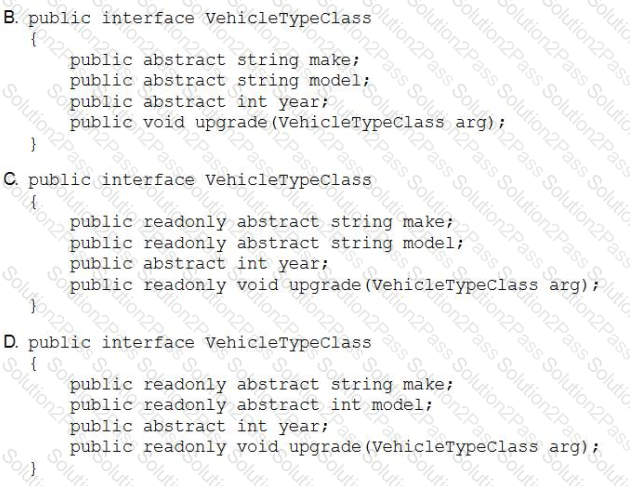C1000-010 IBM Operational Decision Manager Standard V8.9.1 Application Development Free Practice Exam Questions (2025 Updated)
Prepare effectively for your IBM C1000-010 IBM Operational Decision Manager Standard V8.9.1 Application Development certification with our extensive collection of free, high-quality practice questions. Each question is designed to mirror the actual exam format and objectives, complete with comprehensive answers and detailed explanations. Our materials are regularly updated for 2025, ensuring you have the most current resources to build confidence and succeed on your first attempt.
After a decision service is implemented in the Rule Designer, a developer would like to analyze the rule artifacts in the rule project by creating a query in the fijle project. Which element can be found by the query?
How would the following business policy be classified?
The vehicle usage MUST NOT BE Commercial
Which statement is true regarding the decision service rule project hierarchy?
How can the state of a decision service branch be captured in Decision Center at a specific moment in time?
A company wants to implement a business rules solution for warranty claims on their widgets. The customer requires that servers should not store any information about the context of clients between calls and must have a strict enforcement of objects, rules and constraints. The implementation must support complex operations and synchronous calls. Integration with other services must be platform independent. What implementation best fits the customers requirements?
Ruleset parameters can be defined for a ruleset or decision service, and the parameters can have different directions such as IN, OUT, or IN_OUT. If the decision service being invoked includes all three different types of parameters, which statement is true?
Which statement is true about the Business Console Administration tab?
A company wants to use ODM for asynchronous processing with large payloads and very strict performance guidelines. They want to keep data extraction and execution close to reduce any latency effects. They also need ODM to scale as they might want to execute rules from several different applications concurrently. What execution implementation fits these requirements?
What business rule application requirement would lead a Rule Developer to implement their own UrTraceDAO ,in order to create a custom DAO for storing execution traces?
The project owner, Paul, asks a rule author, Bea, to update rules for the Spring release, and asks Adam to review and validate Bea's changes. After Bea finishes her updates, she notifies Adam. Adam is unable to access the project to test the changes. What is the problem?
A rule task in a ruleflow contains multiple rules and all the rules in this task need to be evaluated. Which Exit Criteria should be chosen?
Which artifact is a supported execution object model (XOM) source?
Which execution algorithm should be used for a rule task with rule chaining?
How are objects removed from working memory?
What is the resulting BOM class when the following Java XOM class is imported in the rule project?



Which statement is true when deploying a RuleApp archive?
Which rule engine execution mode is designed to optimize a large numbers of objects?
Which statement applies when enforcing security on a project using Decision Center Business console?

